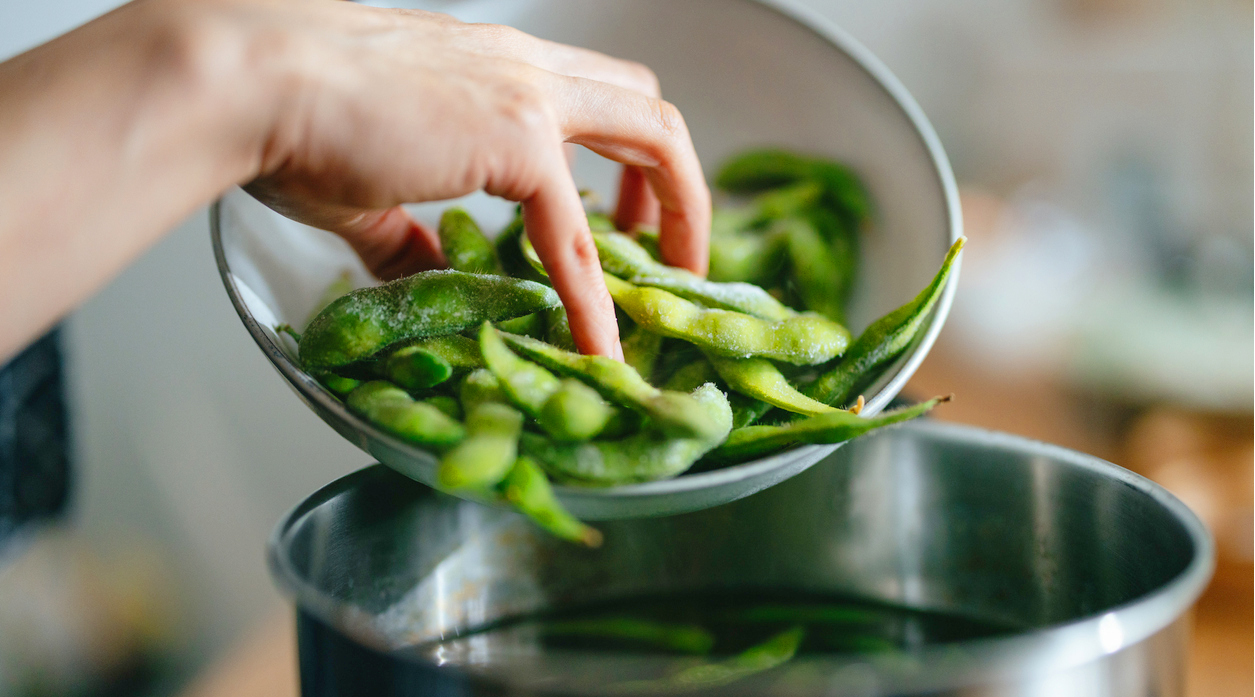Beans

Health Power
Among many varieties, pinto beans are surprisingly nutritious. More fiber than most foods. Excellent at lowering cholesterol, regulating blood sugar (especially for those with insulin resistance) and smoothing out digestion. Crucial contribution to heart health. High content of folate, potassium and magnesium. Folate lowers concentration of amino acid homocysteine. (When elevated in the blood, can seriously damage blood vessels.) Potassium an essential component of nerve cell communication, muscle contraction (especially heart) and blood pressure regulation. Magnesium helps maintain blood flow through vessels by blocking calcium channels. Iron optimizes oxygen attachment to hemoglobin molecules, which transport oxygen in blood. Copper and manganese help protect energy-producing cell bodies (mitochondria) by activating superoxide dismutase, which knocks out free radicals. Copper also needed to form hemoglobin. Vitamin B1 (thiamin) contributes to energy production and healthy brain function by helping produce neurotransmitter acetylcholine. Excellent source of protein at low calorie cost.
Vitamin and Mineral Content
Vitamins – B9 (Folate) and B1 (Thiamin)
Minerals – Molybdenum, Manganese, Phosphorus, Iron, Magnesium, Potassium and Copper
Disease Prevention
Reduces risk of heart attack, stroke, cardiovascular disease, irritable bowel syndrome, diabetes, colon cancer and Alzheimer’s disease.
How to Grow
Part of the Leguminosae family. Hundreds of different cultivars. You can find a variety that will grow in your location. Two main types: shell beans used for seeds and snap/bush beans grown for their pods. Two types of growth patterns: self-supporting and others (pole and runner beans) that grow on stakes or suspended strings. Most beans grow best in warmer temperatures (about 75˚F) and are very sensitive to cooler temperatures. Prefer sheltered sunny site with well-drained soil and lots of organic matter. Prepare rows by amending soil with aged compost or planting mix rich in organic matter. If soil is heavy, use more compost to loosen. For seeds to sow properly, soil should be above 60˚F and near pH 6.5. Beans do not easily transplant, but if warm season is short, you may have no choice. Start beans indoors in pots about a month before frost. Sow seeds outdoors about two weeks after the last frost. Place them about 1 inch under the soil and pat the soil down over top. Place bush beans 4-6 inches apart in rows and space rows about 2.5 feet apart. Pole beans are more sensitive to cold. Plan on planting a week or two later and harvesting a week or two earlier. Yield about three times as many beans per area as bush types. Sow seeds 2 inches deep and 10-12 inches apart in single rows spaced about 3.5 feet apart or double rows spaced 1 foot apart. A bean teepee makes nice addition to garden. Water beds evenly and keep soil moist. Letting soil dry out may hurt yields. Bush types germinate in 1 week; pole types in 2 weeks. After seedlings are a few inches tall, apply a thick layer of mulch to retain moisture, deter weeds and buffer the soil against temperature fluctuations. Light application of fertilizer containing nutrients mid-season produces high yields. Snap beans and shell beans ready for harvest when soft and a little longer than index finger. Harvest all as soon as they are ready to stimulate re-growth. If you see outlines of seeds on pod, you have waited too long. Eat or freeze them immediately to preserve the fresh flavor. Both unshelled beans and those in pods preserve for about a week in refrigerator. To dry shell types, let them sit in pods on plants until pods turn brown and dry out. If weather is wet, cut plant and hang upside down in dry area. Dried beans last about one year.
Insect Control
Common pests are aphids, corn earworms, cabbage loopers, corn borers, Mexican beetles and Japanese beetles. Aphids can be handled by inter-planting French Marigolds, which attract their predators. Hoverflies and lady bugs eat tons of aphids. Corn earworms grow roughly 2 feet long and grub on bean plants. Not a large threat, but if you get a manually uncontrollable infestation, apply the insecticide Bacillus thuringiensis (Bt). Cabbage loopers feed on leaves and eat twice their body weight a day. If they are uncontrollable by manually picking, use an insecticide like Bt. Mexican beetles will ravage the bean plants if they infest in numbers. The first sign is small yellow groups of eggs, which hatch into larvae that look like small yellow caterpillars. Adults look like larger, darker ladybugs. Remove eggs and larvae and smash adults when you see them.
Tips
In order to get continuous harvest, successively sow every two weeks until 2 months before first frost. Be careful not to knock off blossoms when watering.





